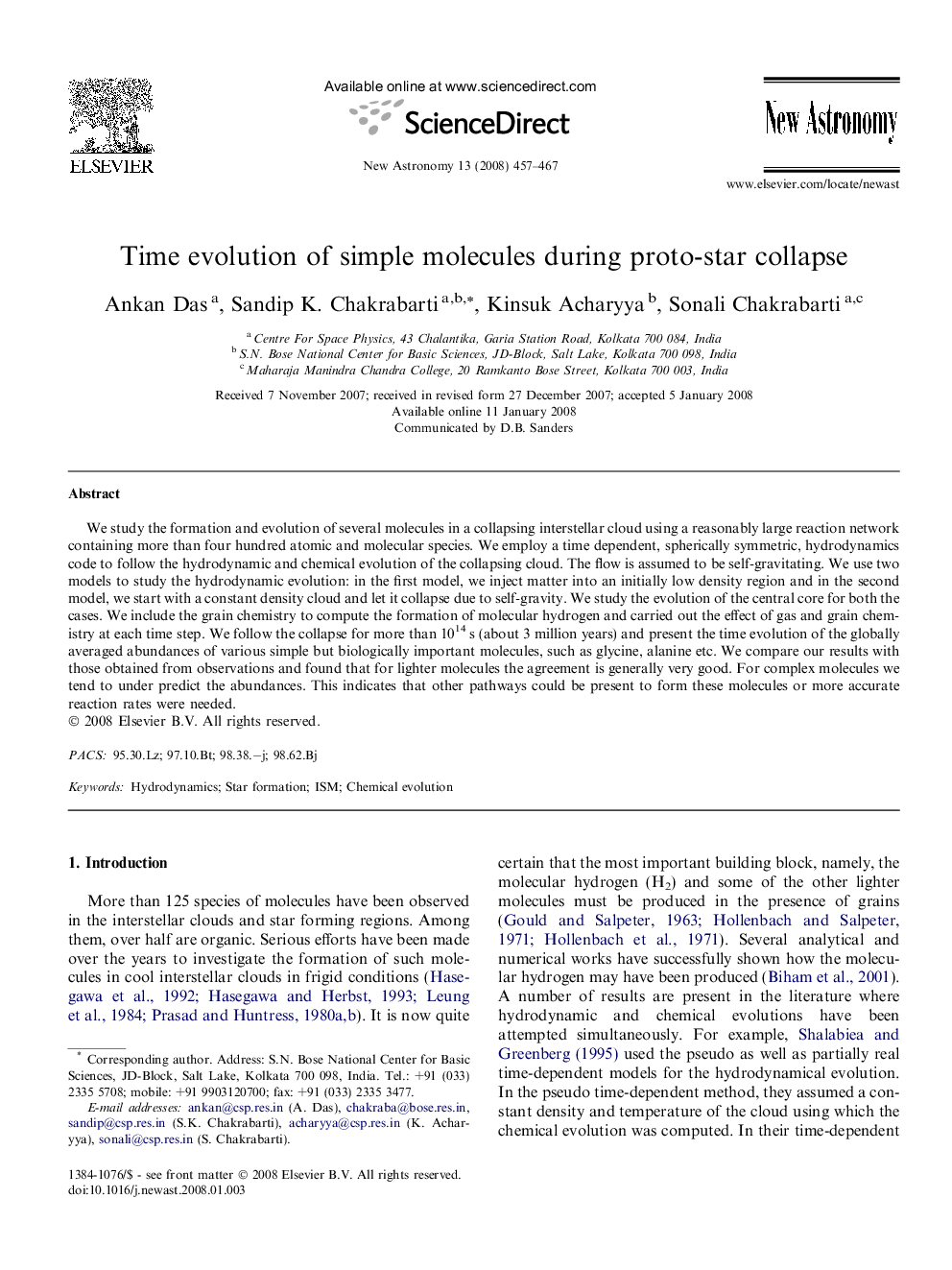| Article ID | Journal | Published Year | Pages | File Type |
|---|---|---|---|---|
| 1779841 | New Astronomy | 2008 | 11 Pages |
We study the formation and evolution of several molecules in a collapsing interstellar cloud using a reasonably large reaction network containing more than four hundred atomic and molecular species. We employ a time dependent, spherically symmetric, hydrodynamics code to follow the hydrodynamic and chemical evolution of the collapsing cloud. The flow is assumed to be self-gravitating. We use two models to study the hydrodynamic evolution: in the first model, we inject matter into an initially low density region and in the second model, we start with a constant density cloud and let it collapse due to self-gravity. We study the evolution of the central core for both the cases. We include the grain chemistry to compute the formation of molecular hydrogen and carried out the effect of gas and grain chemistry at each time step. We follow the collapse for more than 1014 s (about 3 million years) and present the time evolution of the globally averaged abundances of various simple but biologically important molecules, such as glycine, alanine etc. We compare our results with those obtained from observations and found that for lighter molecules the agreement is generally very good. For complex molecules we tend to under predict the abundances. This indicates that other pathways could be present to form these molecules or more accurate reaction rates were needed.
